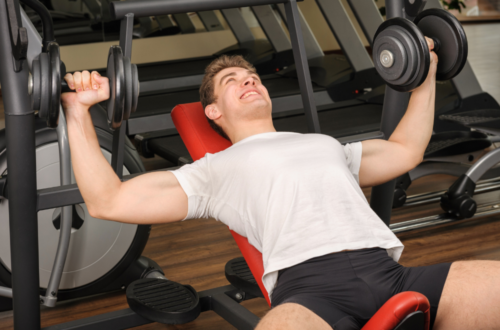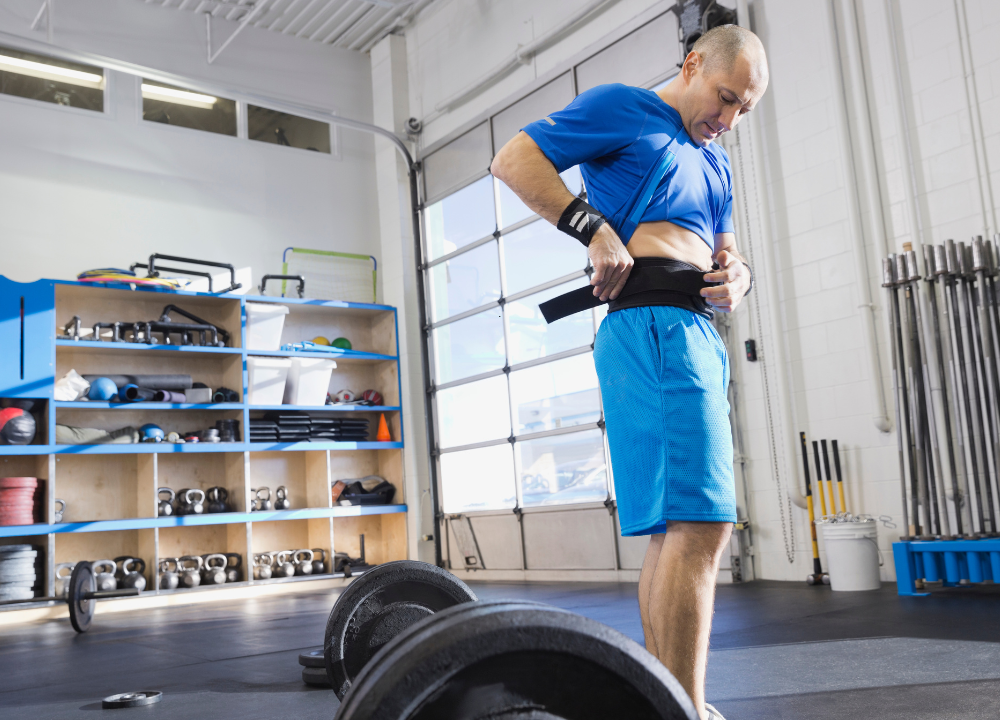
The Ultimate Guide to Weight Lifting Belts: Size, Purpose & More
Weight lifting belts provide support to the lower back and core during heavy lifts. Correct sizing ensures effectiveness and safety.
Weight lifting belts are essential for anyone serious about strength training. They offer crucial support to the lower back and core, helping to prevent injuries during heavy lifts.
This guide will delve into the different types of weight lifting belts, how to choose the right size, and their various benefits.
Table of Contents
What Is A Weight Lifting Belt?
Weight lifting belts are essential tools for athletes and fitness enthusiasts aiming to enhance their performance and safety. This section will delve into the definition and function of weight lifting belts.
Definition And Function Of Weight Lifting Belts
A weight lifting belt is a specialized belt worn around the waist during heavy lifting exercises. These belts are typically made from leather or synthetic materials and come in various widths and thicknesses. The primary purpose of a weight lifting belt is to provide support to the lower back and core during heavy lifts, such as squats, deadlifts, and overhead presses.
Here are some key functions of weight lifting belts:
- Stabilizing the Spine: The belt helps maintain proper spinal alignment by increasing intra-abdominal pressure.
- Reducing Stress on the Lower Back: By providing additional support, the belt minimizes the risk of lower back injuries.
- Enhancing Performance: Many lifters find that wearing a belt allows them to lift heavier weights with more confidence.
To better understand the benefits, let’s look at a comparison table of lifting with and without a belt:
| Aspect | With Belt | Without Belt |
|---|---|---|
| Spinal Support | High | Moderate |
| Injury Risk | Low | Higher |
| Weight Lifted | More | Less |
Best on The Market: Premium Weightlifting Belt for Serious Functional Fitness
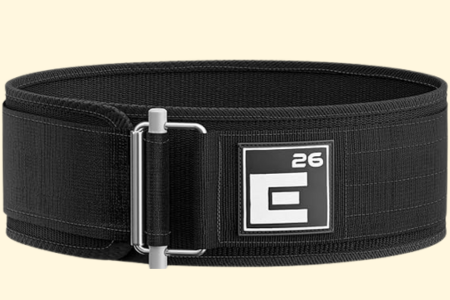
Benefits Of Using A Weight Lifting Belt
This section delves into the key benefits of using a weight lifting belt.
Improved Core Stability And Support
A weight lifting belt offers improved core stability and support. When you wear a belt, it acts as an external support system for your core muscles. This support helps you maintain a better posture, especially during heavy lifts like squats and deadlifts.
Here’s how it works:
- Intra-abdominal pressure: The belt increases intra-abdominal pressure, stabilizing your spine.
- Enhanced muscle activation: It helps activate core muscles more effectively.
- Posture maintenance: A belt keeps your back straight, reducing the risk of rounding your spine.
Better core stability translates to higher lifting efficiency and reduced risk of injury.
Does A Weight Lifting Belt Help Prevent Lower Back Pain?
Lower back pain is a common issue among lifters. Many wonder if a weight lifting belt can help. The answer is yes. A belt provides extra support to your lower back, which can prevent pain and injuries.
Key benefits include:
- Spinal alignment: A belt helps keep your spine in a neutral position.
- Reduced strain: It minimizes the strain on your lower back muscles.
- Better lifting mechanics: You are less likely to use improper form.
Using a belt can also give you more confidence to lift heavier weights. Feeling secure in your lower back support allows you to focus on the lift itself, rather than worrying about potential pain or injury.
Can A Weight Lifting Belt Prevent Hernias?
One of the most debated topics is whether a weight lifting belt can prevent hernias. While a belt can’t guarantee prevention, it does offer significant protective benefits.
Here’s how:
- Increased abdominal pressure: This reduces the strain on your abdominal wall.
- Supportive structure: A belt acts as a barrier, distributing pressure more evenly.
- Improved form: Proper lifting form reduces the risk of hernias.
Hernias often occur due to improper technique or excessive pressure on weak spots in the abdominal wall. A weight lifting belt can help mitigate these risks, making it a valuable tool for anyone lifting heavy weights.
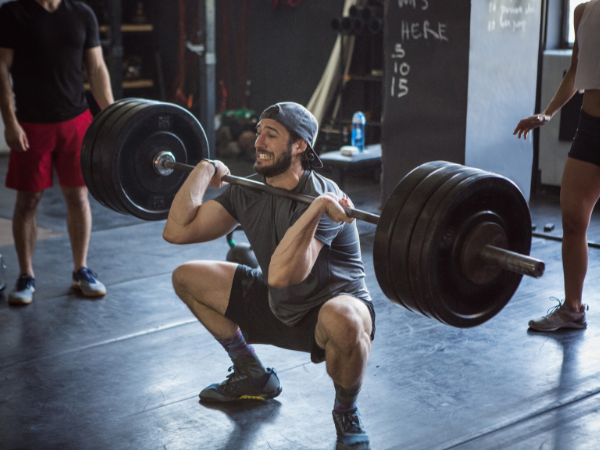
When To Use A Weight Lifting Belt
This section will guide you on the optimal times to use a belt and help you maximize your workouts.
Types Of Exercises That Benefit From A Belt
Not all exercises require a weight lifting belt. Some specific exercises benefit greatly from the added support. Here are some key exercises:
- Squats: Belts help maintain core stability and reduce the risk of back injuries.
- Deadlifts: Provides lumbar support, allowing you to lift heavier with confidence.
- Overhead Press: Enhances posture and reduces stress on the lower back.
- Clean and Jerk: Assists in maintaining a strong core during complex movements.
- Bench Press: Helps stabilize your core, though less common, some lifters prefer it.
Here is a quick reference table for exercises and belt usage:
| Exercise | Belt Needed | Benefits |
|---|---|---|
| Squats | Yes | Core stability, back support |
| Deadlifts | Yes | Lumbar support, heavier lifts |
| Overhead Press | Yes | Posture enhancement, lower back stress reduction |
| Clean and Jerk | Yes | Core strength, complex movement support |
| Bench Press | Optional | Core stabilization |
Should Beginners Use A Weight Lifting Belt?
Beginners often wonder if they should start with a belt. Here are some points to consider:
- Build Core Strength First: It’s crucial to develop natural core strength before relying on a belt.
- Learn Proper Technique: Focus on mastering the correct form and technique without a belt.
- Light to Moderate Weights: Beginners should start with lighter weights. No belt is usually necessary at this stage.
As a beginner, using a belt too early might hinder core development. Here’s a simple guide:
| Stage | Belt Usage | Focus |
|---|---|---|
| Beginner | No | Core strength, technique |
| Intermediate | Sometimes | Moderate weights, form |
| Advanced | Yes | Heavy lifting, stability |
In summary, beginners should prioritize natural core strength and proper technique. A weight lifting belt can be introduced as they progress to heavier weights and more advanced stages.
What Size Weight Lifting Belt Should You Get?
Choosing the right size weight lifting belt is crucial for effective support and comfort. Learn how to measure your waist, understand belt widths, and find the best fit for your needs.
How To Measure For The Perfect Fit
To get the perfect fit, you need to measure your waist accurately. Use a cloth measuring tape, not a metal one, as it conforms better to your body. Follow these steps:
- Stand up straight and relax your stomach muscles.
- Wrap the measuring tape around your waist, just above your belly button.
- Ensure the tape is snug but not too tight.
- Read the measurement in inches or centimeters.
Here’s a table to help you correlate your waist measurement with belt sizes:
| Waist Measurement (inches) | Belt Size |
|---|---|
| 24″ – 28″ | Small |
| 28″ – 32″ | Medium |
| 32″ – 36″ | Large |
| 36″ – 40″ | X-Large |
Note: Always refer to the manufacturer’s sizing guide, as sizes may vary. If your measurement falls between sizes, opt for the smaller size for a snug fit.
Different Sizes And Styles Of Belts Explained
Weight lifting belts come in various sizes and styles, each designed for specific purposes. Here’s a breakdown:
- Powerlifting Belts: These belts are typically 4 inches wide and provide maximum support. Ideal for heavy lifts like squats and deadlifts.
- Olympic Lifting Belts: Usually narrower in the front, allowing for greater flexibility during dynamic lifts such as snatches and cleans.
- Velcro Belts: Easier to adjust and often preferred for lighter lifting or CrossFit. They offer less support compared to leather belts.
- Lever Belts: Feature a lever mechanism for quick tightening and releasing. They provide consistent tightness and are popular among serious lifters.
Here’s a table summarizing the different styles:
| Style | Width | Best For |
|---|---|---|
| Powerlifting Belt | 4 inches | Heavy lifts, maximum support |
| Olympic Lifting Belt | 2-4 inches (narrow front) | Dynamic lifts, flexibility |
| Velcro Belt | Varies | Lighter lifting, CrossFit |
| Lever Belt | 4 inches | Consistent tightness, serious lifting |
Choosing the right size and style will depend on your lifting needs and personal preference. Make sure to try different styles to find the one that fits you best.
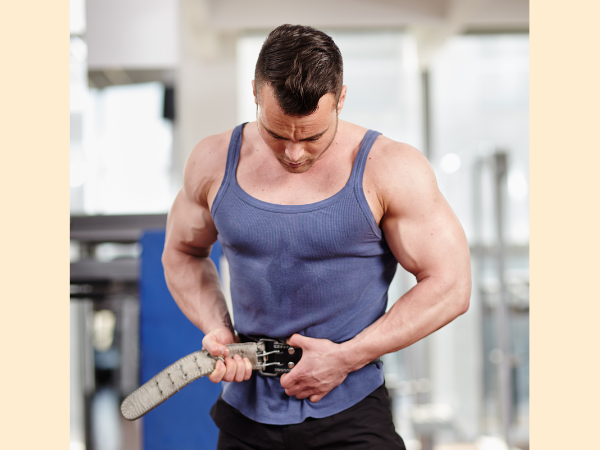
Do Weight Lifting Belts Make Your Waist Smaller?
There’s a common belief that weight lifting belts can shrink your waist, but is it true? Explore the myths and facts about how belts impact waist size and core development.
Myths And Facts About Waist Size And Weight Lifting Belts
There are many myths about weight lifting belts and waist size. Some people believe that wearing a belt can make your waist smaller. This belief stems from the idea that the belt compresses the waist.
Here are some common myths and facts:
- Myth: Wearing a weight lifting belt will shrink your waist.
- Fact: A belt provides support but does not alter waist size permanently.
- Myth: Belts help burn fat around the waist.
- Fact: Belts do not target fat loss in any specific area.
- Myth: A tight belt will sculpt your waist.
- Fact: Belts offer stability, not body shaping.
Weight lifting belts are designed to support your core. They help you lift heavier weights safely. They do not affect your waist size. The compression you feel is temporary. It helps brace your core during lifts.
Table of Myths vs. Facts:
| Myth | Fact |
|---|---|
| Belts shrink your waist | Belts provide temporary support |
| Belts burn waist fat | Belts do not affect fat loss |
| Belts sculpt your waist | Belts enhance stability |
Long-term Effects Of Using A Weight Lifting Belt
Using a weight lifting belt has several long-term effects. These effects are primarily related to performance and safety. It’s important to understand these effects to make informed decisions.
Long-term benefits include:
- Enhanced Stability: A belt provides better core support.
- Injury Prevention: It reduces the risk of lower back injuries.
- Improved Performance: Lifters can handle heavier weights.
Potential drawbacks include:
- Dependency: Relying too much on belts can weaken core muscles.
- Improper Usage: Incorrect use can lead to discomfort or injury.
Weight lifting belts are effective tools. They provide support and improve performance. But they should be used properly. Over-reliance can lead to weaker core muscles. Always focus on proper form and technique first.
Understanding the long-term effects helps you use belts wisely. They can be a valuable part of your lifting routine when used correctly.
How To Properly Wear A Weight Lifting Belt
Wearing a weight lifting belt correctly is essential for maximum support and safety. Learn the right positioning, how tight it should be, and tips for avoiding common mistakes.
Adjusting The Belt For Maximum Support
Proper adjustment of a weight lifting belt is key. Follow these steps to ensure maximum support:
- Position the belt correctly: Place the belt around your waist. It should sit just above the hip bone. The belt should cover your lower back and abdomen.
- Tighten the belt: Pull the belt tight. It should be snug but not too tight. You should be able to take a deep breath without discomfort.
- Check the fit: Ensure the belt stays in place during movement. It should not shift or slide.
Here’s a quick reference table for belt adjustments:
| Step | Description |
|---|---|
| 1 | Position above the hip bone |
| 2 | Tighten until snug |
| 3 | Check for stability |
Common Mistakes When Wearing A Belt
Many lifters make mistakes when wearing a weight lifting belt. Avoid these common errors:
- Wearing the belt too high or too low: The belt should sit at the waist, not on the ribs or hips.
- Over-tightening the belt: A belt that is too tight can restrict breathing and movement. It can cause discomfort and reduce performance.
- Using the belt for all exercises: A weight lifting belt is not needed for all exercises. Use it primarily for heavy lifts like squats and deadlifts.
Here are more common mistakes in a table format:
| Mistake | Why it’s a problem |
|---|---|
| Wearing too high/low | Reduces support and increases injury risk |
| Over-tightening | Restricts breathing and movement |
| Using for all exercises | Unnecessary and can weaken core muscles |
Avoid these mistakes to maximize the benefits of your weight lifting belt.
Are Weight Lifting Belts Worth It?
Weight lifting belts offer several benefits, but are they necessary for everyone? Discover the pros and cons of using a belt, and whether it’s the right choice for your training goals.
Pros And Cons Of Using A Weight Lifting Belt
Weight lifting belts offer several benefits, but they also have downsides. Understanding both sides can help you decide if a belt is right for you.
Pros:
- Increased Support: Belts provide additional support to your lower back. This helps prevent injuries.
- Better Performance: Many lifters find that they can lift heavier weights. The belt helps stabilize the core.
- Improved Posture: A belt encourages proper posture during lifts. This reduces the risk of strains.
Cons:
- Dependency: Relying too much on a belt can weaken your core muscles. It’s essential to train without a belt too.
- Improper Use: Incorrectly using a belt can lead to injuries. It’s vital to learn how to use it properly.
- Cost: Quality belts can be expensive. This might be a barrier for some lifters.
Here’s a quick comparison of the pros and cons:
| Pros | Cons |
|---|---|
| Increased Support | Dependency |
| Better Performance | Improper Use |
| Improved Posture | Cost |
Is A Belt Necessary For Every Lifter?
Not every lifter needs a weight lifting belt. It depends on your training goals and experience level.
Beginners:
- Focus on Form: Beginners should concentrate on learning proper form. This helps build a strong foundation.
- Core Strength: It’s crucial to develop core strength without a belt first. This helps prevent dependency.
Intermediate Lifters:
- Consider Goals: If lifting heavier weights is a goal, a belt might be beneficial.
- Occasional Use: Use the belt for heavy lifts only. Continue training core muscles without it.
Advanced Lifters:
- Heavy Lifting: Advanced lifters often lift very heavy weights. A belt can provide essential support.
- Injury Prevention: For those who have had injuries, a belt can help prevent re-injury.
To sum up, the necessity of a belt varies. Evaluate your goals and training level to make an informed decision.


